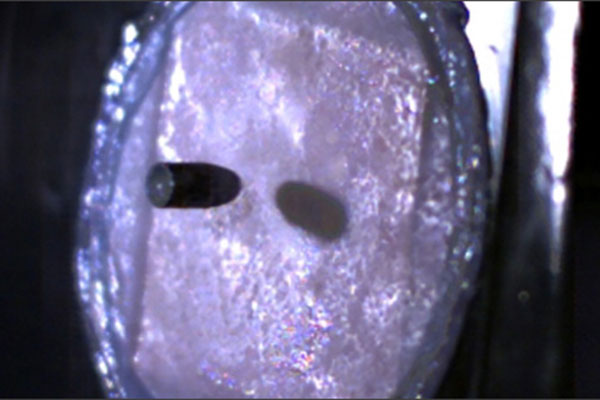Art From a Laboratory
I’m not sure how I feel about art that experiments with human skin. Firstly, it’s rather grotesque; and secondly, I am yet to figure out how I feel about the ethics behind it. In a project called 2.6g 329m/s, artist Jalila Essaïdi tries to create “bulletproof skin,” and videos a .22 calibre Long Rifle bullet being shot into human skin that has been implanted with spider silk produced by transgenic goats. She claims it embodies an attempt to explore “the social, political, ethical and cultural issues surrounding safety.” However, the concept of interfering with the structure of human skin for an artistic purpose was much more fascinating than that of “safety.” To what extent is society ready to accept manipulation of human biological matter for the sake of art?
Science and art have never been mutually exclusive. Simply think about the role that optics plays in reducing scenes in our real lives onto a two-dimensional flat surface. Or Leonardo da Vinci and his plane models, for example. However, more recently the scientific method in particular has been incorporated into contemporary artwork, with the laboratory environment often used as a form of studio. The result is “Bio Art” – an international art movement that taps into genetic modification and cloning to produce distinctly … unusual works.
“Bio Artists” contemplate the social and ethical values that have emerged in society as a result of biotechnological developments. Take the work of Brazilian artist Eduardo Kac, who commissioned scientists to inject a fertilized egg from an albino rabbit with a green fluorescent protein from a type of jellyfish. Called GFP Bunny, the finished “artwork” is a rabbit that glows green under a blue light. Far from being anti-science, many artists have clearly embraced biotechnology as a fresh way to produce works that exploit the biological matter we take for granted. Such works have the potential to make most of us quite uncomfortable.
On the other hand, many artists feel a pressing need to use art as a forum for helping the public understand the issues surrounding the increasing role of biotechnology in our daily lives. The Critical Art Ensemble performed scientific procedures in public as a way of educating audiences about genetically modified food, with one project even involving the testing of participants. Interestingly, the FBI detained a founding member of the group on a (later disproven) accusation of bioterrorism.
Biotechnology is, as you all know, a touchy issue, and has proven to be a particularly divisive debate in modern society – a society in which art is increasingly playing an outspoken role.
So I do find the ability to make a real life glow-in-the-dark mammal “shocking”? I was certainly forced to think about the ethical implications of creating such an artwork. Many other “Bio Art” works push audiences in a similar way – they make us question the acceptability of scientifically manipulating organic material … while simultaneously grossing us out a bit.



